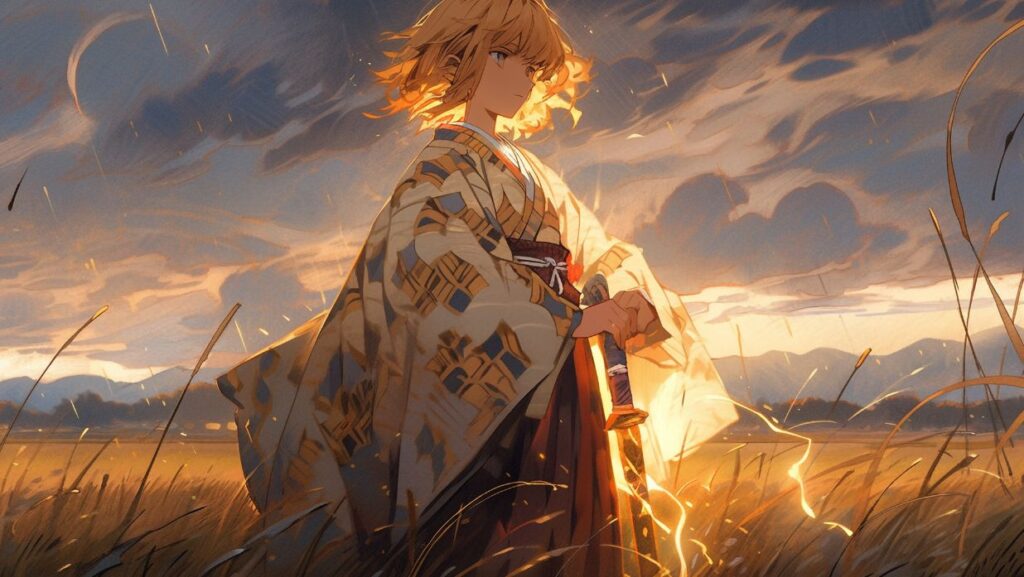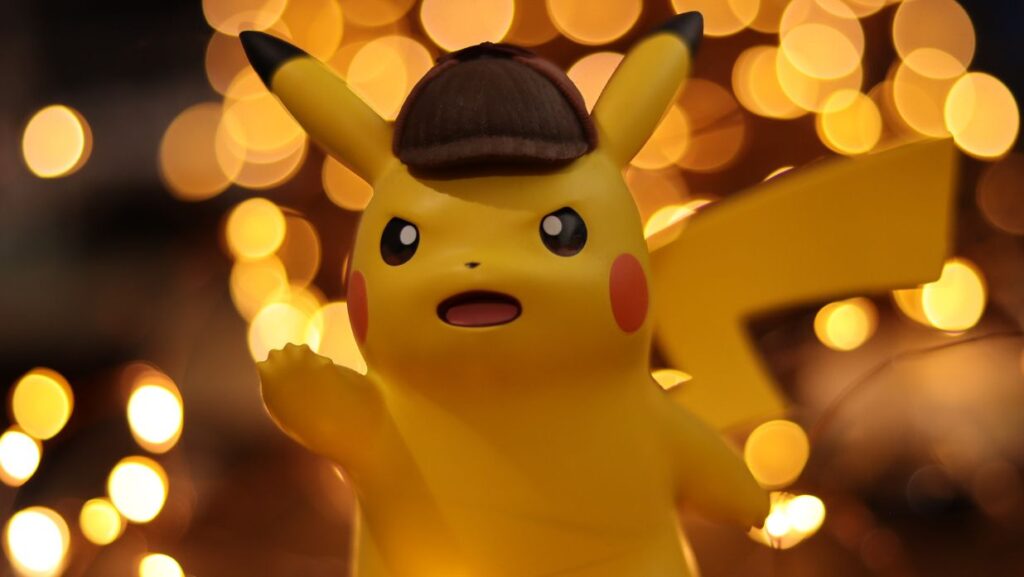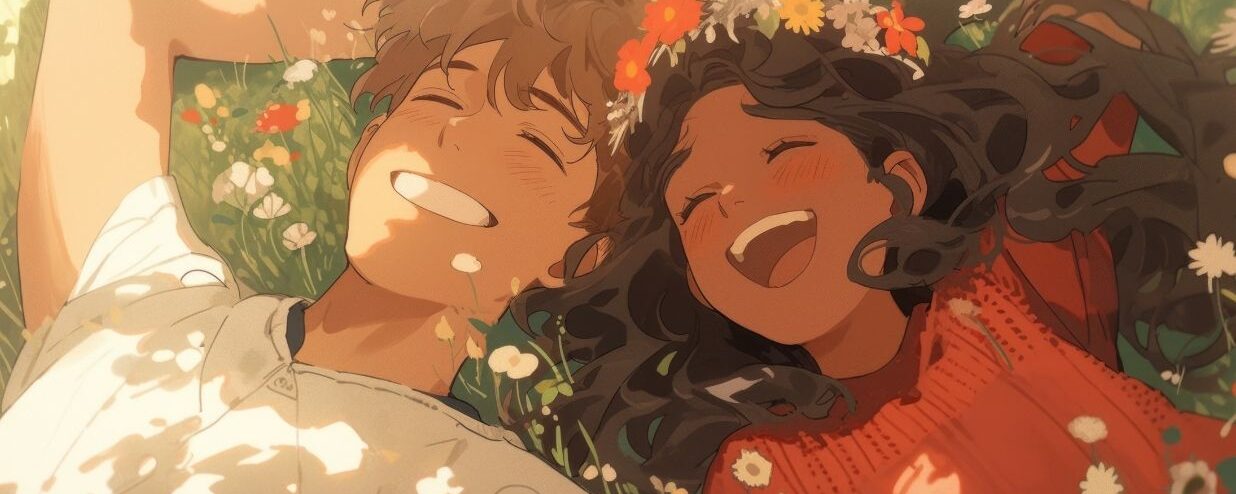A lot of us want to start learning Japanese because of manga and anime — but did you know that you can use them to learn Japanese, too? After all, how long can you glue your face to a JLPT textbook before reaching your phone? How many Japanese vocabulary words can you go through in Anki before you feel overwhelmed? Learning Japanese through anime might be a great way to get ourselves out of a study rut when that lull comes in.
From classic, family-friendly Ghibli films and comedy-romance tropes to tear-jerking slice-of-life series, check out our recommended anime to learn Japanese. These shows use simple, casual Japanese, so they’re easy to absorb — but still insightful.
Can You Use Anime to Learn Japanese?

Yes, you can use anime to learn Japanese. While using textbooks and workbooks is a great way to study Japanese, formal instructions can feel stiff and restricting. Oftentimes, they don’t provide you with the right practical insights either, like Japanese slang words, social context, and casual, natural expressions.
This is why anime can provide valuable education on Japanese culture and daily life. By watching Japanese media, you’re exposed to (almost) real-life conversations between Japanese people — something that is important when you can’t really immerse in Japanese society (in other words, when you’re not living in Japan).
We recommend anyone to learn Japanese when they’ve got a solid foundation in the Japanese language — or at least when they’re around upper-beginner. If you start too soon, you won’t have the mind to understand or listen to anything. That way, you won’t mindlessly mimic what’s said on the shows and use it in the wrong context.
On the other hand, anime may not always be the most effective tool for learning Japanese—especially if you rely on it too heavily without supplementing it with other study materials. This can be particularly challenging when watching shows that use unnatural or highly stylized language. For example, historical anime may feature overly formal keigo, while some seinen series are filled with slang that’s uncommon in everyday conversation.
How to Learn Japanese Using Anime
Remember what we said about anime as a tool to help you learn natural expressions? Don’t expect the Japanese in anime to fully reflect real-life Japanese. A common pitfall among anime fans is adopting vocabulary words and phrases without fully understanding the meaning and contextual use.
For example, a lot of action anime will use temee (“you” in Japanese), but it’s a very offensive second-person pronoun. You’ll only risk offending native speakers or, worse, embarrassing yourself.
We want you to be aware that not all Japanese phrases and slang you’ll find in the anime world are appropriate for real-life use. Seinen genre, which is a subgenre targeted at a young Japanese male audience, is known to contain rude slang words that you absolutely can’t use.
After all, watching anime is only one ingredient of a large recipe. Don’t expect watching your favorite anime for 8 hours straight will magically turn you into a fluent speaker. You need both formal learning materials — like the right Japanese course that focuses on speaking and practice — and a casual study method.
Together, they create a well-rounded language learning progress. Here are a few tips to effectively make anime a part of your Japanese study plan.
1. Choose your anime genre
Anime shows like Shingeki no Kyojin (Attack on Titan) and Jujutsu Kaisen (Sorcery Fight) are getting popular, but they use a lot of niche vocabulary that is not common in real-life use. For more educational purposes, try to start with lighter genres, like slice-of-life, romance, or comedy. Anime for children, for example, is great because it contains simple and beginner-level Japanese.
With that said, in the long run, choose an anime and genre you enjoy watching. At the end of the day, finding an engaging show or film you can stick to is a bigger motivator to learn Japanese — and, ultimately, a more effective alternative.
2. Playing around with the subtitles
This particularly works when you’re around intermediate-level. By opting for English subtitles with Japanese, you’re actively reviewing and learning new kanji. It’s also a great chance to condition your listening skills, too.
3. Fill in your knowledge gap and write notes
Whenever you hear a new word or any phrases that are unfamiliar, write it down in a note. You can then compile all the new vocabulary into a flashcard (like Anki).
Check out: How to Learn Japanese with the Anki Flashcard System.
4. Rewatch and repeat the anime episodes
We don’t expect anyone to understand 100% of what’s said in the episode. When it’s becoming too difficult, try to learn and go back again. See how much your comprehension has improved over time.
15 Best Anime to Learn Japanese

We’re not in the business of recommending children’s anime movies. At least, not all. Part of why anime is a great ingredient in your overall Japanese progress recipe is in its entertainment factor: you need to love what you watch.
We’re combining a mix of family-friendly, comedy, romance, and slice-of-life anime films and TV shows. You can watch them all through a paid streaming platform, like Netflix, Crunchyroll, or Hulu.
1. Spirited Away
What it’s about: On the way to their new home in the suburbs, Chihiro and her parents unknowingly entered the world of Kami (Japanese Shinto spirits). After her parents are turned into pigs, she disguises herself as a worker in a bathhouse to free herself and her parents from the spiritual world. Her journey is accompanied by a boy named Haku.
Why we love it: You can’t dive into anime without hearing about Ghibli Studio, which is the Japanese equivalent of Disney. Two of their most iconic and successful films are Spirited Away and My Neighbour Totoro.
Unlike most fantasy genres, the magical element in Spirited Away isn’t the main focus. Rather, it’s made a vehicle for the plot. Because of this, the dialogues and language don’t feel overbearing. In fact, the vibe is closer to slice-of-life than adventure or fantasy. You’ll listen to regular Japanese phrases and everyday conversations.
Genre: Adventure, fantasy, children
Watch on: Netflix
2. My Neighbour Totoro
What it’s about: The film follows Satsuki and Mei, who, along with their father, move to rural Japan to be close to their recovering ill mother. As the sisters settle in their new old house, they quickly discover and befriend playful spirits in the nearby forest — particularly a giant furry creature they call Tororo.
Why we love it: My Neighbour Totoro is the most well-known Ghibli film. Most of Hayao Miyazaki’s works are targeted at children (although we can’t say adults don’t love them), so they use simple and standard Japanese that even non-native speakers can understand. It’s a great movie for anyone to fall in love with Japan and the language.
Genre: Adventure, fantasy, children
Watch on: Netflix
3. Haikyuu!
What it’s about: When Hinata Shouyou watched a national volleyball match, he quickly fell in love with the sport. Despite his short height, he grew determined to become a volleyball player and join his star player’s previous volleyball club.
Why we love it: Most characters in Haikyuu are high school boys, so you’ll learn a lot of slang words and casual phrases used by Japanese students (again, keep in mind that Japanese anime is still different from real Japanese). It’s a great option for Japanese learners who prefer more action-packed, coming-of-age anime without overbearing vocabulary words.
Genre: Sports, comedy
Available on: Netflix, Hulu, Crunchyroll
4. Otaku ni Koi Wa Muzukashii (Wotakoi: Love is Hard for an Otaku)
What it’s about: The anime show focuses on Narumi, a closeted fujoshi (a woman who is a fan of male-male romance), and her budding romance with her childhood friend Hirotaka, an otaku who works in the same company as her.
Why we love it: If you love lighthearted romance with a fun couple dynamic, Otaku ni Koi Wa Muzukashii is the right option. The anime sheds light on a salaryman’s everyday life in Japan and how Japanese people talk. There’s a mix of both formal and informal Japanese, so you can learn practical conversations and cultural insights. The plot is relatively straightforward, so you’ll have an easy time following the story.
Genre: Romance, comedy
Available on: Netflix, Prime Video
5. Gokushufudou (The Way of the Househusband)
What it’s about: The Way of the Househusband is an anime series about Tatsu, a notoriously respected ex-yakuza member who retires from crime to become a dedicated househusband. Based on the manga by Kousuke Oono, each episode follows Tatsu as he tackles everyday challenges — like running errands or making bento — with the same intensity he once brought to his yakuza life. Despite trying to become a great househusband, his controversial past and appearance often give the wrong impression.
Why we love it: There’s not that much dialogue in the anime show, but its lack of complexity is what makes Gokushufudou perfect for upper beginners who might have trouble with the fast pace of regular anime. Most of all, it’s a great chance to review practical Japanese words about daily life and household activities. The episodes are short and entertaining. For intermediate learners, we recommend switching off the subtitles.
Genre: Comedy
Watch on: Netflix
6. Doraemon

What it’s about: Nobita Nobi, a fifth-grade Japanese boy, is lazy, weak, and unlucky. Following a series of unfortunate events in the future, his great-great-grandson, Sewashi Nobi, sends a robot cat named Doraemon back to the past to take care of Nobita.
Why we love it: Doraemon is a classic anime that even non-anime fans know. Because it’s produced for children, the anime uses basic and easy Japanese that excludes jargon or slang. You’ll hear common, everyday words, so it’s the right starting point if you’ve just been introduced to Japanese.
Genre: Comedy, science fiction
Watch on: Netflix, Disney+ Hotstar
7. Blue Period
What it’s about: After discovering a painting at his high school’s art club and getting inspired by it, Yatora Yaguchi joined the club. From here, the story follows Yaguchi in his attempts to enter the Tokyo University of Arts.
Why we love it: Coming-of-age anime shows are always great for learning Japanese. Most of the characters will use casual Japanese forms and regular phrases for everyday conversations. The sentences won’t be as short as those in children’s anime, but following casual talks between friends is possible for upper-beginner to intermediate students.
Genre: Coming-of-age, drama
Available on: Netflix
8. Your Lie in April (Shigatsu wa Kimi no Uso)
What it’s about: After the death of his mother, former piano prodigy Kosei becomes unable to hear the sound of his piano. A meeting with Kaori Miyazano, a free-spirited violinist, persuades him to be her accompanist, and he eventually falls in love with her.
Why we love it: The anime mostly uses informal Japanese language. Unlike a lot of seinen TV shows or films, you won’t find a lot of profanity or weird slang words (like Naruto’s dattebayo), so beginners don’t have to worry about learning the wrong thing. The vocabulary for this series focuses on music and everyday life, so it’s perfect for Japanese language students who already have a solid grasp of basic-intermediate grammar and vocabulary.
Genre: Romance, drama
Available on: Netflix
9. Your Name
What it’s about: Mitsuha Miyamizu is a high school girl living in rural Japan. Bored with the town, she wishes to be a Tokyo boy in her next life. Taki Tachibana is a high school boy in Tokyo. One day, both of their bodies suddenly swap, and every other morning, they must live as one another. Things get complicated as they finally decide to see each other.
Why we love it: Your Name holds a special place on our list (call us biased). They’re not just great to learn Japanese. In fact, the speed of the conversations can feel fast, and the complex plot makes the whole story not so easy to digest. But what puts this anime on this list is its depiction of the life of teenagers in Japan. You’re able to see into Japanese culture.
Genre: Romance, fantasy
Available on: Amazon Prime
10. Wolf Children
What it’s about: College student Hana falls in love with a man, who reveals himself to be a werewolf. They later have two children, Yuki and Ame. The man soon died in an accident. Now, as a single mother, Hana moves to the countryside to raise her children — as wolves and humans.
Why we love it: A lot of children’s anime, which we usually recommend for beginner Japanese students, lacks substance. They’re good for learning, but they’re not necessarily catered to adults. Wolf Children ticks two things on our list: simple, easy conversations and a great story. The film’s central theme is “parent and child” between Hana, Yuki, and Ame. This means you’ll hear a lot of short, casual Japanese.
Genre: Drama
Available on: Netflix, Hulu, Amazon Prime
11. Spy x Family
What it’s about: What happens when a spy, an assassin, and a telepath live together? You get Spy x Family. Spy x Family follows a master spy codenamed “Twilight,” who must create a fake family to infiltrate an elite school as part of a secret mission to keep peace between two rival nations. He becomes Loid Forger, a psychiatrist, marries Yor, an assassin posing as an ordinary clerk, and adopts Anya, a telepathic girl — though none of them know each other’s true identity. The result is a chaotic but heartwarming family where only Anya knows the full truth.
Why we love it: Spy x Family can be a fun way to learn Japanese, especially for picking up casual conversation, daily expressions, and family-related vocabulary. The characters speak in relatively natural, modern Japanese, making it easier for learners to follow. Just be mindful of the occasional slang or exaggerated speech used for comedy.
Genre: Action, comedy, slice of life
12. Detective Conan
What it’s about: The story follows Shinichi Kudo, a high school detective who is transformed into a child after being poisoned by a mysterious organization. Taking the alias Conan Edogawa, he lives with his childhood friend Ran and her detective father while secretly solving cases behind the scenes, hoping to one day return to his original body and uncover the truth behind the organization that shrank him.
Genre: One of the great anime classics adapted from the manga of the same name, Detective Conan delivers clever mysteries, memorable characters, and a timeless mix of suspense and humor. It’s also a great way to learn formal and logical Japanese expressions often used in crime-solving and deduction scenes.
Genre: Mystery
13. Sazae-san
What it’s about: Sazae-san is a slice-of-life anime that follows the everyday life of Sazae Fuguta and her extended family living in Tokyo. Originally created by Machiko Hasegawa, it focuses on simple, light-hearted stories about family, tradition, and daily routines in Japanese society.
Why we love it: As the longest-running animated TV show in the world, Sazae-san is a cultural icon in Japan. Like many slice-of-life anime shows, it’s perfect for Japanese learners because conversations are mostly clear, containing a lot of daily expressions.
14. Suzume
What it’s about: Suzume is a fantasy adventure anime film directed by Makoto Shinkai, following a high school girl named Suzume who discovers a mysterious door that leads to disasters across Japan. She partners with a young man to close these supernatural doors and prevent further catastrophes, all while confronting personal grief and healing.
Why we love it: Created by the same director as Your Name, Suzume features stunning visuals and emotional storytelling. It’s great for learners interested in natural dialogue, with lots of lively banter between the brooding young man, the strong-willed Suzume, and her aunt. Just be mindful of the regional dialects and deeper cultural themes like loss, resilience, and connection.
Genre: Fantasy
15. Weathering With You
What it’s about: Weathering With You is a fantasy romance film by Makoto Shinkai about a runaway boy named Hodaka who meets Hina, a girl with the mysterious ability to stop the rain and control the weather.
Why we love it: With breathtaking animation and a touching story, Weathering With You offers learners natural, conversational Japanese set in a modern urban environment.
Genre: Romance, fantasy
Want to watch anime without subtitles? Learn Japanese at Coto Academy
If you want to watch anime without subtitles and actually understand the language, learning Japanese is the way to go. Watching anime in Japanese is a fun way to improve, but to really get it, you need solid language skills. At Coto Academy, we help you learn practical Japanese that makes watching your favorite shows even more enjoyable—and totally subtitle-free!
Join our intensive Japanese course or part-time Japanese lessons in as little as a week. We also offer online lessons. Interested? Fill out the form below for a free level check and consultation!
FAQ
What is the #1 anime in Japan?
The #1 anime in Japan often changes, but currently, series like Demon Slayer and Jujutsu Kaisen are among the most popular.
Is anime a good way to learn Japanese?
Anime can be a helpful supplement for learning Japanese, especially for listening practice and cultural insight.
Can you become fluent in Japanese by watching anime?
Watching anime alone is unlikely to make you fluent, but combined with study, it can improve your skills.
What are the best anime to learn Japanese?
Some of the best anime to learn Japanese include Shirokuma Cafe for casual conversation, Detective Conan for formal language, Doraemon for simple vocabulary, The Way of the Househusband for daily life expressions, and Nichijou for natural speech and slang.
Like reading this content? You might love:
